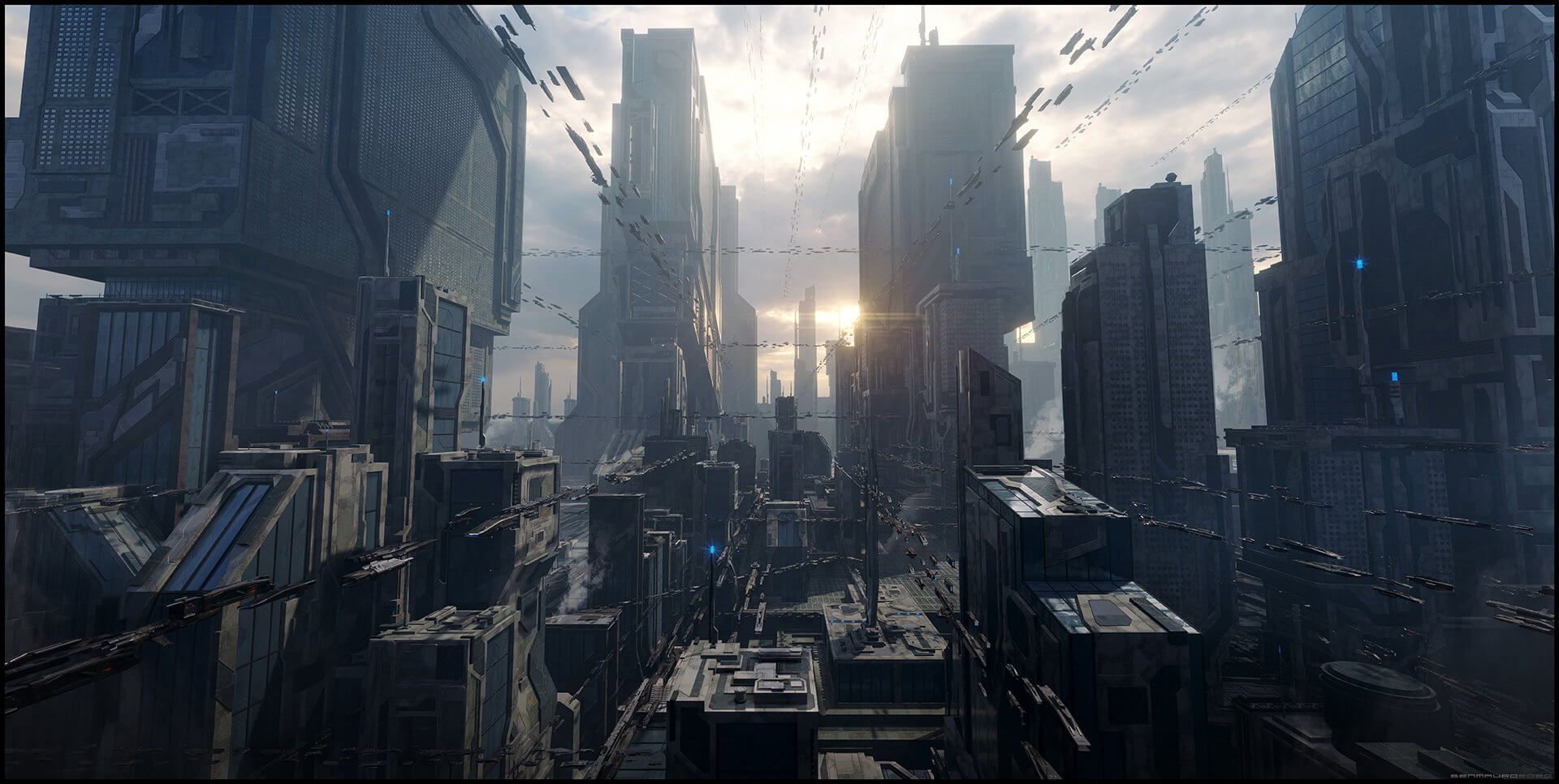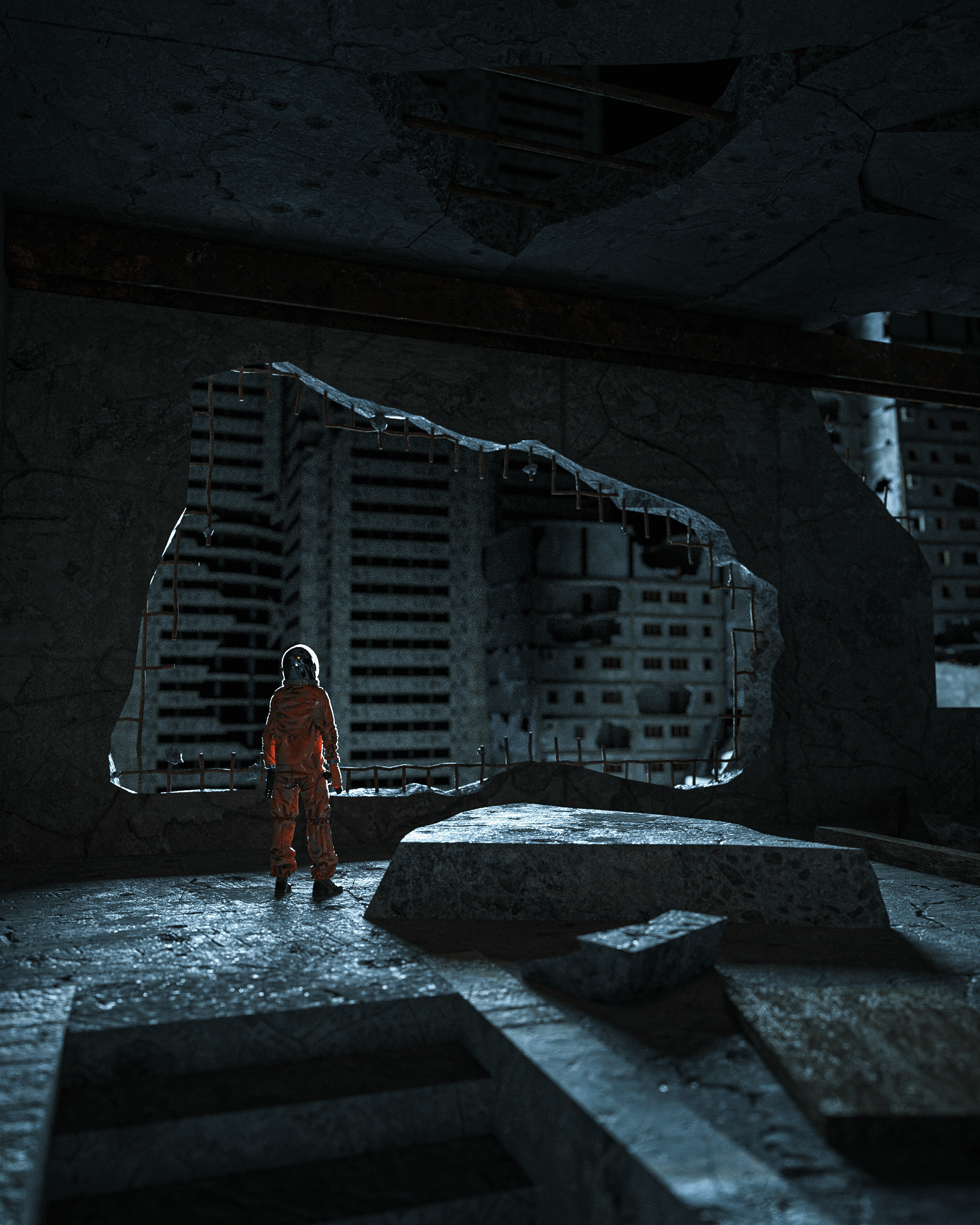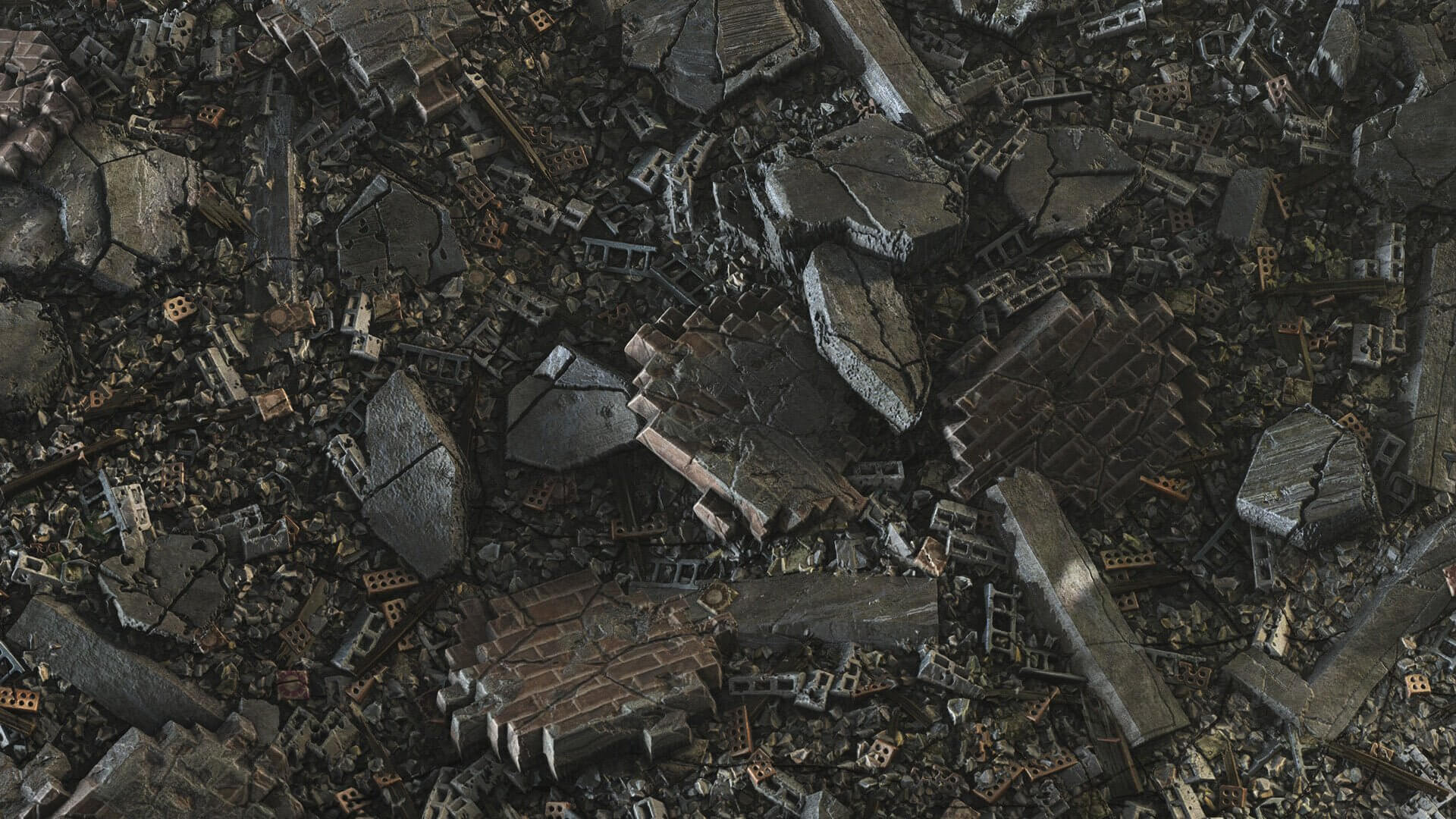343 Industries Senior Concept Designer Ben Mauro is currently working on the highly anticipated Halo Infinite due out this year, and already has a tremendous collection of Sci-Fi concept art in his portfolio, so it was a no brainer to ask him to create the cover art for our latest kit: Sci-Fi Industrial. We were lucky enough to nab him for a few days from his busy schedule to create the cover art and even luckier to have him record and share his process for everyone to learn from!
Check out this timelapse and then read below to find out how Ben did it!
Ben, you created this cover using Blender, so how long have you been using Blender in your workflow? Do you use it for professional and personal work?
I have been using Blender for about a year and a half now for both personal and professional use. I was always on the fence about getting into more technical modeling programs, but now I regret not getting into it sooner. It’s an incredible program, it has sped up my workflow tremendously and allowed me to create things easily that I thought were impossible before. If someone told me I would be able to create some epic sci-fi city scene like this in a couple of hours I would have told them they were crazy, but now this sort of thing is no big deal…..and it can be done in realtime!
Alright, this cover art is incredible. Can you take us through how it was done?

First I import Sci-Fi Industrial into the scene and link up all the materials to the texture library that comes with it, and once they are all loaded in the fun begins! I start thinking about what kind of scene I want to create, making sure to get some sort of human scale in there to give context to everything.
If no brief was provided by the client I just start experimenting and seeing what kind of idea or story begins to naturally come together. Once I feel like a cool idea is taking shape, I can start refining and editing the lighting, time of day, add fog in the scene, add in an HDRI for a more realistic sky etc. Once the scene is assembled, I start flying around like a photographer taking photos and exploring compositions I think might look interesting for the assignment.
After that I edit down, select the top choices and eventually get down to the final shot. Once selected, I will focus on refining things in 3D if needed. Maybe it feels too empty and I need to:
- add in smaller details like spaceships flying around,
- adjust buildings that might be causing compositional tangents
- make sure the value breakup is working
- make sure cast shadows from the sun are falling in such a way that create an interesting and appealing graphic breakup for a successful image.
Basically everything I would do if I was painting the image in Photoshop but now doing it in 3D/realtime. I’m kind of obsessed lately with being able to click the render button and have the final detailed image all finished without any need for Photoshop, in this instance I got it 99% of the way in 3D with the final 1% of adding simple color grading and minimal smoke on rooftops done at the end in Photoshop.
I noticed you used an Add On called Physical Starlight and Atmosphere, is that part of your usual workflow to light a scene? Can you reveal any other Add Ons you use in your workflow especially for this project?
Physical Starlight is amazing! It creates a much more accurate skylight environment than Blender's current default one, and using it is so simple/easy. Some other plugins I used for this image in particular were some material libraries in KitOps that are very fast and easy to use. I also used a plugin called Pro Lighting Skies. You can load in your own HDRIs manually in the world node, but this just comes with a pretty extensive sky library, so it’s really easy to add to a scene and rotate around in a few seconds.
 The last plugin I used was called Photographer, which is just a really handy Add On giving you a lot more control of the cameras in your scene and also allows you to click through all the cameras very easily. When a scene gets this big, I tend to copy around a lot of different cameras in different locations, at different focal lengths so it just saves a lot of time being able to cycle through all the shots and not lose track of a cool angle I might have forgotten about.
The last plugin I used was called Photographer, which is just a really handy Add On giving you a lot more control of the cameras in your scene and also allows you to click through all the cameras very easily. When a scene gets this big, I tend to copy around a lot of different cameras in different locations, at different focal lengths so it just saves a lot of time being able to cycle through all the shots and not lose track of a cool angle I might have forgotten about.

What are the pros of working in real-time? and if any cons what are your workarounds.
The pros are working at an instantaneous speed and being able to see the final result in your viewport with perfect clarity/materials/lighting without any lag whatsoever. Once you experience that, it’s hard to go back to anything else, it's very addicting!
The cons would be that technically a lot of things aren’t 100% accurate. Cycles and render engines like Octane definitely give better final results as it is accurately calculating everything, but those calculations take a lot of time. For me, the workaround has been figuring out every little trick and hack I can to replicate as much of what those engines do and make it work in Eevee/Realtime so that I can just have instantaneous results. So instead of waiting an hour for a final render out of Octane I can get 80 renders out of Eevee in 5k. It’s not 100% there yet, but for concept art, you can get really nice results that I’m finding less and less reasons to wait for long renders when the results out of Eevee look pretty great.

Blenders realtime engine EEVEE looks amazing, your workflow looks fairly fast.
Absolutely, I try to work as fast and efficiently as I can. The speed of working in Blender/Realtime really excites me, being able to just mock things up so fast and freely makes me feel like a kid again playing with toys or something. I try to create a workflow that allows me to stay in that ‘fun’ state of mind as long as possible, if I’m enjoying myself I’m more likely to create work that I’m happy with. Cutting out anything technical that might get in the way as early on in the process as possible is ideal, but it’s good to know all that stuff, so that you can solve any problems if they pop up later on.
Do you usually bring a figure to help you with the scale of a scene?
It's pretty essential to get human scale in your scene as early as possible to provide some sort of context and scale to what you are looking at. Are these buildings the size of an ant? 3 miles tall? For models, I find that building a library of Archvis people scans, characters, robots or whatever is relevant to the theme of your scene, important to do as you start getting more into this type of work. Earlier on for this image I had a more real-world human scan in the scene as a character, then swapped it out with more of a sci-fi soldier character, but ultimately I ended up going with more of a city shot where the environment was the character, but the scale of everything in the scene would have been way off if I hadn’t assembled everything based on the human scale added to the scene from the start.


Has EVEE replaced sketching thumbnails before jumping into 3D? How did you decide on selecting your composition?
I would say that’s accurate; the speed and ease of Blender/Eevee have replaced composition sketching for me. Whatever allows me to get to the result I want the fastest, I am going to go with that. Earlier on in my career painting was the fastest because 3D was too technical and slow, but I feel that has changed now. Once I do a range of composition exploration, I start going through an editing process based on the needs of the assignment, in this case being a cover of a kit that needs to get people excited about all the cool things they can create once they grab it! With that in mind, I can start editing down a lot of shots. I really liked all of them, to be honest, but having the goal/assignment helps to edit it down fast. I think it came down to 3-4 finals that I went back and forth on a few times until finally settling on the epic city shot. That’s the really exciting part for me being in realtime, its more like being a photographer finding a cool composition.
The scene looks super heavy, but your video makes it look super smooth and in realtime! Are you using a super computer? Can you share your computer specs with our audience?
It is much smoother than in the video actually, for some reason OBS doesn’t record very well when I turned on Eevee. So, if you can just imagine having a dense scene like that and being able to spin and fly around, literally like it's a video game……it's just so fun and addicting!
My home machine is pretty beefy, to be honest, I have a 2990WX (32-core threadripper) and 4x2080ti, however, Eevee only uses 1 GPU, so even with dense scenes like this I’ve had to do for demos, it ran well on the modestly spec’d laptops I had to work on. The last few months my workflow and needs seem to be changing, a large part of which stems from doing more work in Eevee/Realtime, so I am in the process of downgrading my rig to 2x2080ti as that seems to be more than enough for my needs and the type of art I’m creating at the moment. I feel like Octane and Cycles will speed up over time, but for now the speed of Eevee is so addicting that I’m sort of shifting my needs around that, while still having enough hardware for more accurate time-consuming renders when needed.
---

Ben Mauro is a Senior Concept Designer in the entertainment industry, and when he isn't designing things he enjoys traveling and taking photos of dark, dirty, industrial parts of cities and other things far off the beaten path. He studied industrial design and entertainment design at Art Center College of Design in Pasadena, California. After college, he relocated to Wellington, New Zealand where he worked at Weta Workshop from 2009- 2013, and over that time he contributed to a vast array of Film, Television and Video Game projects such as The Hobbit Trilogy and Elysium, among many others. He is currently working at 343 Industries on Halo Infinite. His past clients include: NASA, Lexus, Boston Dynamics, Nvidia, 20th Century Fox, Treyarch, 343 Industries, Sledgehammer Games, MPC, Legendary Pictures, Weta Workshop, Magic Leap, LucasFilm, Rhythm & Hues, Activision, EuropaCorp, Universal Pictures, Sony Pictures Animation, Insomniac Games, Microsoft, Design Studio Press, SyFy and Discovery Channel.
If you'd like to see more from Ben Mauro, please check out his website, Instagram, Artstation, and Youtube





